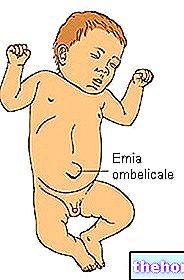Edited by Dr. Davide Sganzerla
In Italy there are many children and adolescents who complain of a bad relationship with the balance; the statistical result leaves no doubts: overweight and obesity in developmental age are certainly not a rare phenomenon. In our country, in fact, in 1999-2000, the percentage of overweight children and adolescents reached about 20%, while the percentage of obese people was 4%.
The problem mainly affects the age group 6-13 years, and prefers males over females. (Giordani, 2002).

These data, results from the 2000 Multi-purpose survey conducted by the National Institute of Statistics (Istat), report the percentages of childhood and adolescent overweight and obesity in Italy according to the international standards proposed by the International Obesity Task Force.
In our country, the Region with the highest presence of children and adolescents with excess weight belongs to Campania, with 36%, while Valle d'Aosta is the Region with the lowest presence of overweight and obese children (14.3 %). Looking at the data, we can see that the problem of childhood obesity gets worse as it goes down from the north to the south of the country. (Giordani, 2002).

As regards the main risk factors of excess weight among children aged between 6 and 17, familiarity (both in its genetic and environmental component) was taken into consideration in the analysis, sedentary lifestyle as a lifestyle and finally the socio-economic status (in particular the mother's level of education and the judgment on the family's economic resources).
Regarding the first factor, it was found that having one or more parents with excess weight carries a greater risk for children and adolescents to have the same problem. More precisely, the Istat survey shows that in the presence of both overweight or obese parents, the percentage of children with the same disorder in the age group examined is about 34%, while the percentage drops to 18% if none of the two parents complain of excess weight. The percentage is about 25% if only the mother weighs too much (25.4%) or only the father (24.8%). at least one obese adult, without taking into account the degree of kinship, children between 6 and 13 years with weight problems are as much as 42.1%. (Giordani, 2002).

As for lifestyles, one of the major causes of childhood obesity and overweight is a sedentary lifestyle, so much so that there is an increasing tendency to give greater importance to low energy expenditure (resulting from a sedentary life without any physical-sporting activity), compared to to the intake of very caloric foods. (Giordani, 2002).

Considering the socio-economic status, and in particular the educational qualification of the mother, from the data it emerges that the risk of childhood obesity is higher when the mother has an elementary school certificate or no educational qualification (25.9% of children and adolescents with excess weight), while it is lower when the parent's educational qualification is a degree or a high school diploma (22.5%).
The percentage of obese or overweight boys is 25.1% if the mother has a lower middle school license. (Giordani, 2002).

Finally, again on the subject of socio-economic status, if we look at Fig. 6 it can be seen that the percentage of children between 6 and 17 years of age with excess weight is:
26.6% in the event that the judgment on the family's economic resources is negative;
23.1% when the family's financial resources are considered excellent or in any case adequate. (Giordani, 2002).
Other articles on "Childhood obesity in Italy"
- Childhood obesity consequences
- Childhood obesity
- Childhood Obesity Causes
- Childhood obesity incidence in Europe and the world
- Childhood obesity solutions
- Childhood obesity bibliography




























